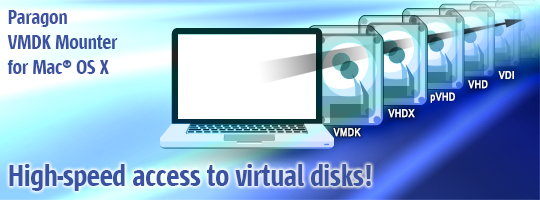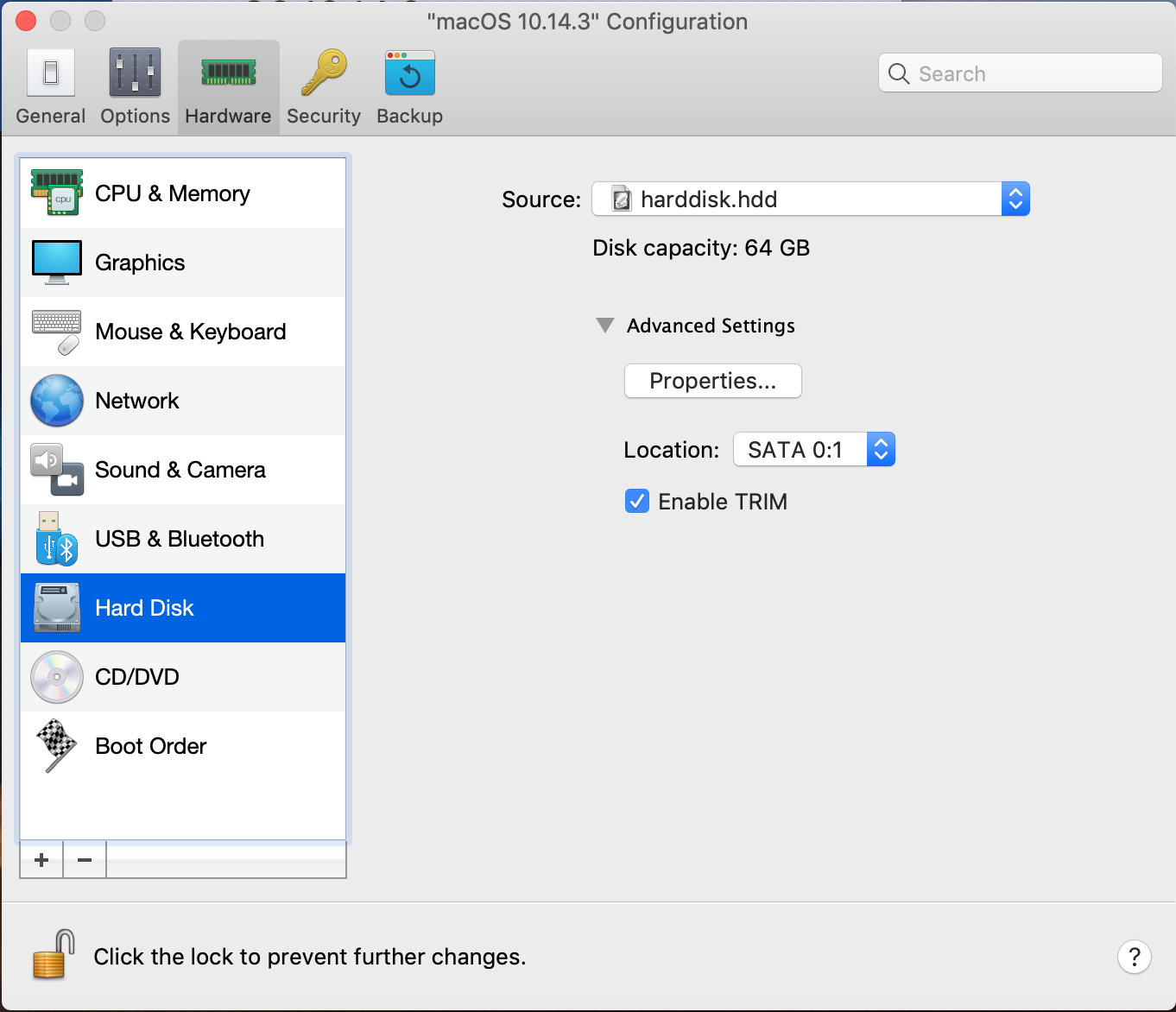MAC Address Policy: Specifies how to retain network card MAC addresses when cloning the VM. For example, the Generate New MAC Addresses For All Network Adapters value assigns a new MAC address to each network card during cloning. This is the default setting. This is the best option when both the source VM and the cloned VM must operate on the same network. Install VirtualBox to your computer. You can download free VirtualBox installation package from.
Mac OS is the secondmost popular operating system after Microsoft Windows. Although you arecomfortable using Windows for a very long time but there are many scenarioswhere you need a Mac OS machine.
Whether you want to develop your iOS app on Xcode, using apps like Final Cut Pro or iMovie which only comes on Mac OS, you need to buy an expensive Apple Macbook. So, without making a hole in your pocket, the alternate solution to this installing Mac OS on your Windows computer. Let’s get started with this tutorial
Watch Video Tutorial
Step One: Download Mac OS ISO Image file
As you are on a Windows PC, you don’t have access to Apple Store to download Mac OS. You need to download Mac OS from an external trusted source. You can download the latest Mac OS Catalina 10.15 or Mac OS Mojave 10.14 Installer files from our website.
Step Two: Download Virtual Machine for Windows
There is various free Virtual Machine software available for Windows such as Oracle’s VirtualBox. But I recommend using VMware Workstation Pro, although it’s a paid software but you can use it free for 30 days trial. You can download Vmware Workstation Pro 15 from this link.
Step Three: Install VMware Patch to run Mac OS X
- Go to the VMware macOS Unlocker page to download. Click the Clone or download button, then click Download ZIP.
- Power off all virtual machines running and exit VMware.
- Extract the downloaded .zip file in step 1.
- On Windows, right-click on the win-install.cmd file and select Run as Administrator to unlock. Also, run win-update-tools.cmd for VMware tools for macOS.
- After the unlock process is complete, run VMware to create the macOS virtual machine.
Step Four: Create an Apple Mac OS Virtual Machine

- Click File, select New Virtual Machine…
- Select Typical (recommended) and click Next.
- Select I will install the operating system later. and click Next.
- Select Apple Mac OS X in the Guest operating system section and select macOS 10.14 in the Version section. Click Next.
- In the Name, the Virtual Machine window, name the virtual machine and virtual machine directory. I personally would put it on a different drive than the system drive.
- Select the size for the new virtual disk in the Specify Disk Capacity window. This is the virtual disk to be installed macOS. Click Next and then Finish.
Step Five: Run you Mac OS Virtual Machine with VMDK or ISO file
After successfully creating an Apple Mac OS Virtual Machine, you need to run the machine with an actual Mac OS file such as Mac OS Mojave 10.14 ISO file or Mac OS Mojave 10.14 VMDK Image
Watch this Video Tutorial
If you face any driver issues, Try installing VMware tools from the VM tab in the VMware window. Also, I would recommend assigning a minimum of 4GB RAM and 40GB of Hard Disk to your Virtual Machine.
That’s it for the tutorial If you face any issues or had any query then please let us know in the comment section below. You can also send us an email via the contact us page for personalized support.
While Creating some virtual machine on VirtualBox, we have an option to create a Virtual hard disk for a guest operating system of our own choice, that is really great. However, once it created and VM installed using it then expansion of the same virtual disk drive’s size would be a little complex if you don’t know how to do it. Here we let you know the way to use vboxmanage modifymedium command to increase the disk space or size of Virtual hard disk in VirtualBox installed on Ubuntu (Linux)/MacOS or Windows. This tutorial allows you to expand VDI or VHD or VMDK file-based virtual hard disks size.
How to increase VirtualBox disk space in Ubuntu, Windows & MacOS
#In Windows 10/8/7 :
Step 1: Run Command Prompt as administrator
Press Win Key + R to open the RUN box. In the run box type cmd and then press CTRL+Shift button and press ENTER button. When the system asks for your permission to run command prompt under administrator right click on YES button.
Step 1: Switch to VirtualBox directory
As we know the application we install on the Windows platform, by default, its files go to the C: Drive. Thus, we open VirtualBox directory inside the Command Prompt for that just copy the below command and paste inside CMD and press enter button.


Step 3: Open VirtualBox
After opening VirtualBox directory in the Command Prompt leave it as it is. Now, go and open your VirtualBox. From the left side of the VirtualBox select the Virtual Machine (VM) which actual Virtual Disk size you want to increase.
Step 4: Copy the Path of your VDI/VHD/VMDK Virtual Drive
Under the settings select Storage and then your VM’s VDI/VHD/VDMK virtual hard disk and as you select it some info about it will appear on the right side. What we need here is the location of our Virtualbox’s VM drive. Thus, double click on the location, right-click to copy and paste in NotePad and then close the VirtualBox.

Step 5: Now increase Virtualbox disk size
To increase the size of the VM disk drive the command is:
VBoxManage.exe modifymedium ” paste the above step copied disk drive path” –resize value in MB
In the above command replace the green colour text “paste the above step copied.. path” with the path of a virtual drive we copied and pasted in notepad. While the value in MB will replace the amount of size you want to add to your virtual disk drive. For example, we want to add around 60GB to our existing VDI disk then in our case the command will be like this
Note: Remember in above command the VM drive path is our and you have to replace it with yours.
Step 6: Check increased VirtualBox disk size
Open VirtualBox again, select the VM from the left side -click on Settings-> Storage-> select the Disk drive and in right side info, you will see the increased amount of storage.
#In Ubuntu 19.04, 18.04, 16.04, 14.04… :
The method we used to increase the size of the VirtualBox virtual drive above, the same will apply in Ubuntu too.
Step 1: Open the VirtualBox on Ubuntu and copy drive path
Open Ubuntu VirtualBox and select the Virtual machine which size you want to increase then go to Settings ->Storage->select virtual disk-> copy the disk location.
Step 2: Expand Ubuntu VirtualBox disk size
Finally, open the Command Terminal on Ubuntu you can use the keyboard shortcut CTRL+ATL+T. In Command Terminal use the command
Replace the green text with your VM drive path and amount with the size of storage you want to add or expand for the Virtual drive.
See the screenshot for reference:
Step 3: See the increased Ubuntu VB virtual drive size
Again go to setting of the VM, select the drive and see the amount of storage size this time. You can see in step 1 the size of drive was around 20 GB and now it is around 50GB.
#Increase VirtualBox disk size in Mac OS
Step 1: Copy the Path of VM disk drive
Mac Os X Virtual Disk
You can see how to copy the path of the drive which size you want to increase in above steps for windows & Ubuntu, which will be the same for MacOS too. After copying the path, jot down it somewhere and then shut down the VM and quit VirtualBox.
Step 2: Open the Terminal app on MacOS
On MacOS terminal paste the below command in order to navigate to VirtualBox app directory:
Step 3: Increase the Size of Mac VirtualBox disk drive
For example, let’s say we want to increase the size of some windows guest such as Windows 10 VM VDI file that is located at /Users/h2s/Documents/VM/Windows10.vdi. And we want to add 30GB into our existing virtual disk drive the syntax would be like this:
Virtual Disk Mount Mac
VBoxManage modifymedium “/Users/h2s/Documents/VM/Windows10.vdi” –resize 30000
Step 4: Relaunch the VirtualBox
When this time you open the VirtualBox on your MACOS, you will see the increase in the size of VM disk drive.
Virtual Disk For Mac
Other Useful tutorials:
